
views
X
Research source
In order for your air conditioner to work, you must ensure that this hot air is successfully vented out of the room, preferably through a window to the outside. [2]
X
Research source
This guide will teach you how to properly install and vent a portable, single-hose air conditioner through a window, and offer alternative suggestions if a window is not available.
Venting a Portable Air Conditioner through a Window

Read the instructions that came with your portable air conditioner carefully. Save these instructions and any associated warranty information for future use.
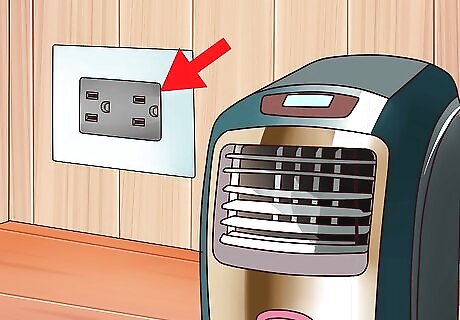
Choose a location for your portable air conditioner. Place the air conditioner near both a window and an electrical outlet. Ensure that the air conditioner will not be a tripping hazard, and that the airflow will not be obstructed by furniture, plants, etc.
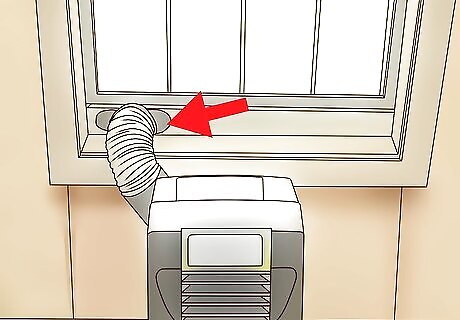
Determine if the window adapter kit will work with your window. Almost all portable air conditioners come with a window adaptor kit that will work, however in some cases the kit is missing or not right for the window, and you will have to improvise a bit. For the unit to function well, the gaps between the window adapter for the vent hose and the sides of the window must be sealed off. Measure your window opening to determine if the window adapter kit can be expanded or trimmed to fit correctly. If the window adapter kit that came with your portable unit is missing or does not adequately fit your window, take careful measurements of the opening you need to accommodate and have a piece of Plexiglas cut to size at your local hardware store. You can also use a piece of plywood, or even cardboard, to fill the gap. These options are less attractive, but will work in a pinch.
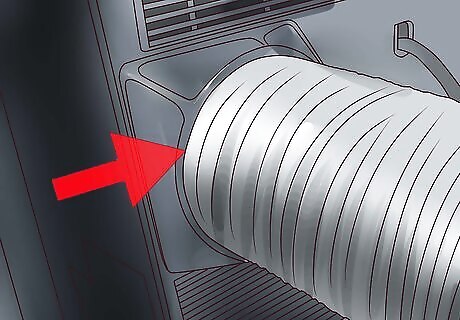
Connect the exhaust hose that came with the portable air conditioner to the air conditioning unit. This may be a single hose with connectors already attached, or you may have to first attach an exhaust connector to the unit, and then attach the hose to the connector. Follow the directions that came with your unit. Connect the window connection bracket or adapter to the other end of the exhaust hose, if it is not already attached. Run the exhaust hose to the window, and place the window connection bracket or adapter into the open window.
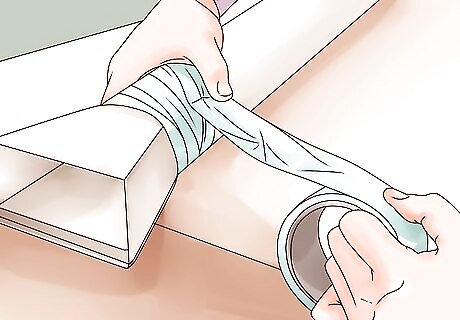
Secure the exhaust hose window connection in place. Adjust the included window kit sliders or panels until they completely fill the gap between the window connection bracket and the sides of the window. If you are using a piece of Plexiglas, simply slide it in the windowsill next to (or above) the exhaust hose window connection, and hold it in place until the window is closed. Close the window so that it fits snugly against the exhaust hose window connection, and holds everything firmly in place. In some cases, it may be necessary to use duct tape to seal the gaps around the exhaust hose window connection, and hold the window kit firmly in place.

Plug in your air conditioner. It should now be ready to use!
Venting a Portable Air Conditioner When a Window is Not Available
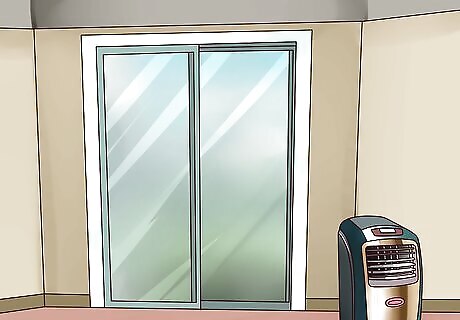
Vent the air conditioner through a sliding glass door. The installation will be similar to that for a window. However, you will probably need to buy a piece of Plexiglas to fill the gap between the exhaust hose and the top of the door. It will also make using the door very inconvenient.

Vent the air conditioner through the ceiling. In office environments where outside windows are not present or accessible, portable air conditioners can be vented through a drop ceiling. Commercial ceiling vent kits can be purchased online or from your local HVAC retailer. There are a number of potential risks and inefficiencies involved with this procedure, so be sure to check with your building's maintenance personnel before proceeding. It is also possible to vent a portable air conditioner into an attic, however to avoid property damage or inadvertently heating up other parts of the house, it is advisable to get professional advice from an HVAC specialist before proceeding.

Vent the air conditioner through an exterior wall. If a window is not available, and a long term installation is desired, a licensed contractor can cut a hole through an exterior wall and install an exhaust port for your portable air conditioning unit.
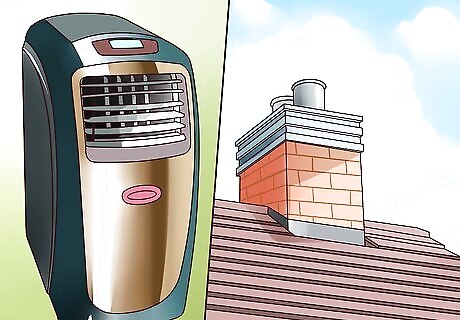
Vent the portable air conditioner through a chimney. In homes that have chimneys, it is possible to vent a portable air conditioner through a fireplace. Use the supplied window adapter kit, or custom-cut Plexiglas to fill in the gaps around the exhaust hose and the fireplace opening. Make sure that your chimney is clean and not obstructed by soot, and that the flue is open.




















Comments
0 comment